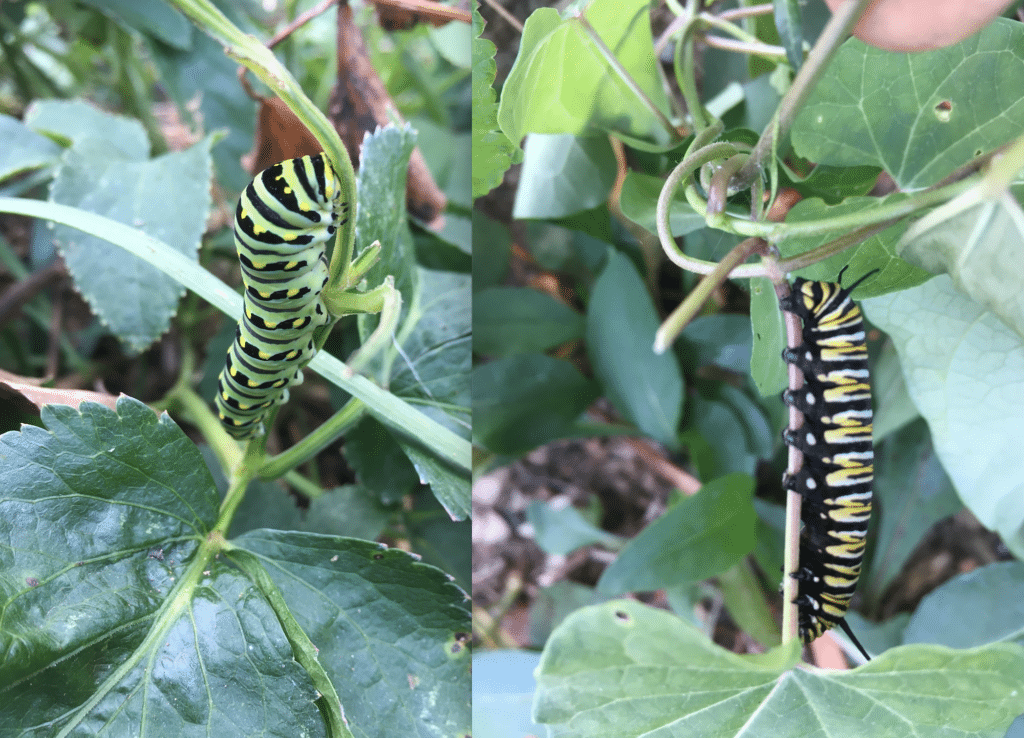Look around and you might find caterpillars munching in the gardens at The National Museum of Transportation! They also pop up wherever their momma butterflies can find a larval food source.
The two caterpillars in the photo were spotted nearby the administrative office which is located at 2967 Barrett Station Road, St. Louis, Missouri, just east of and outside the Museum’s perimeter fence. As we increase our use of sustainable native plants, we provide additional habitat for butterflies like black swallowtails (the greenish one with black stripes and yellow dots) and monarchs (the one with yellow, black and white stripes).
Please leave the caterpillars you see to eat the food we have provided for them at the Museum!
The black swallowtail caterpillar is chomping on golden alexander, a heart-leaf native perennial with yellow flowers that can endure drier soils. A late season black swallowtail caterpillar can overwinter inside a chrysalis. Be careful before you disturb limbs or trim bushes outside–there may be a pupa hiding there preparing for a butterfly release come warmer weather.
The monarch caterpillar is devouring sand vine, also known as climbing milkweed, a vigorous, aggressive climber covering fences and shrubs. Flowers are in round clusters on stalks from the leaf axils. At end of season our Midwestern super monarch butterflies migrate to the Sierra Madre Mountains in Mexico to overwinter, and returning to our area of the United States late spring. It is essential they bulk up before their journey. Our master gardeners at TNMOT work hard to make sure they have the proper nutrition for their massive self-transportation journey of close to 3,000 miles down south.







 BACK TO ALL POSTS
BACK TO ALL POSTS


